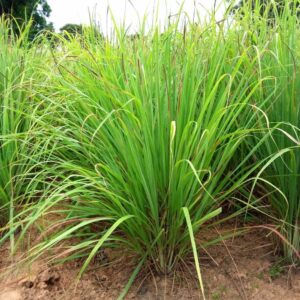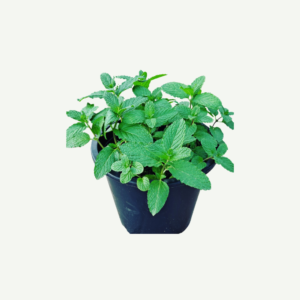Mint is a highly aromatic and versatile herb from the Lamiaceae family. It is native to Europe, Asia, and North America but has been naturalized in many regions around the world due to its popularity as a culinary and medicinal herb. Mint is known for its refreshing and cool flavor, making it a popular ingredient in various culinary creations and beverages.
Culinary and Medicinal Uses:
Mint is widely used as a culinary herb in various cuisines. It is a common ingredient in savory dishes, such as salads, soups, and sauces, as well as in sweet treats like desserts and beverages.
The leaves of mint can be used fresh or dried, and the herb’s flavor is best when used shortly after harvesting.
Mint is also known for its soothing and calming properties. Mint tea is a popular herbal remedy for digestive issues and can be enjoyed both hot and cold.
Landscape Use:
Mint is commonly grown in herb gardens or as a potted plant on patios and balconies.
Due to its spreading nature, it is often grown in containers to prevent it from taking over garden beds or landscapes.
Mint can also be used as a fragrant ground cover in areas where it is allowed to spread or in small patches in the garden.
Overall, mint is a delightful and versatile herb that adds a burst of fresh flavor and fragrance to a wide range of dishes and beverages. Its ease of cultivation and numerous culinary uses make it a favorite among gardeners and cooks alike. Whether you’re brewing a soothing cup of mint tea or garnishing a dish with fresh mint leaves, this herb is sure to elevate the flavors of your culinary creations.
Here’s a general description of mint:
Plant Characteristics:
Leaves: Mint has bright green, oval to lance-shaped leaves with serrated edges. The leaves are covered with tiny hairs that release the characteristic minty aroma and flavor when touched or bruised.
Stems: Mint grows as a low-growing, spreading herb with square stems. The stems are also fragrant and contribute to the overall minty scent of the plant.
Growth Habit: Mint can be a vigorous grower, and some varieties have a tendency to spread aggressively through underground runners. Due to its spreading nature, it’s often best grown in containers to prevent it from taking over garden beds.
Cultural Requirements:
Light: Mint thrives in partial to full sunlight. It prefers at least 4 to 6 hours of direct sunlight each day to grow vigorously and develop its best flavor and aroma.
Temperature: Mint is well-adapted to a wide range of temperatures and can grow in both cool and warm climates. It is generally a hardy herb but may die back in extremely cold temperatures.
Watering: Mint requires regular watering to keep the soil consistently moist. It is important to avoid waterlogged conditions, as mint prefers well-draining soil to prevent root rot.
Soil: Mint grows well in fertile, loamy soil with good drainage. It can also tolerate slightly acidic to neutral pH levels.
Fertilization: Mint does not require heavy fertilization. A light application of balanced fertilizer in the spring can support healthy growth.






